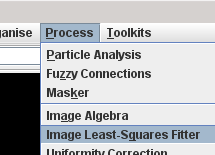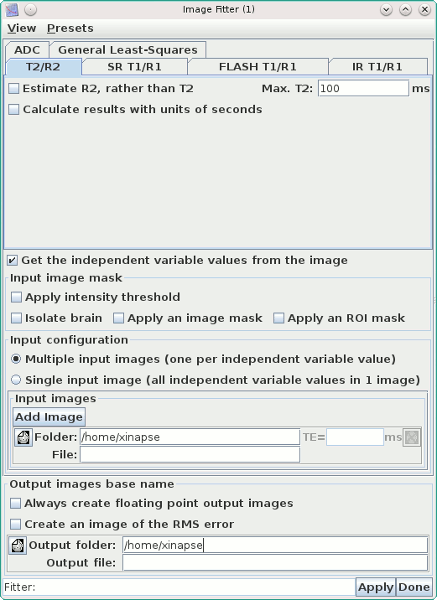Process menu: 
All input image must be of the same dimensionality (i.e., the same number of slices, and rows and columns within the slice). The Fitting tool then works through every pixel in the set of input images, and fits the formula to produce a set of output images - one for each of the fit variables - containing the pixel-by-pixel estimates of the variables.
Alternatively, a single image may contain multiple "volumes" of data, with each volume representing a different value of the independent variable. You just need to tell the Fitter how your images are organised.
The Image Fitting tool is very powerful and flexible - it can fit virtually any function to a set on images representing different independent variable ("x") values. On the other hand, the tool comes with a set of built-in functions, so that you can easily set up for some of the more common fitting tasks, such as inversion-recovery or saturation recovery T1 estimation, diffusion coefficient or T2 estimation. In addition, there is a "roaming fit" facility, where the fit parameters are estimated for pixels within a region of interest. The fit is illustrated on a graph showing the pixel intensity values and the fitted function, so that you can interactively investigate your data, and assess the quality of the fits.
Start the Image Fitting tool from the Process menu: 
The Image Fitting frame will now appear as shown below:
